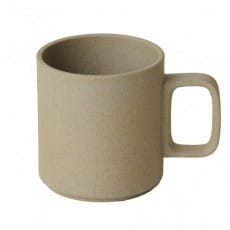Hasami's first kilns were built more than 400 years ago, and the town's ceramics trade peaked in the 18th century. At the time, Hasami bottles containing soy sauce and sake made Nagasaki prefecture the only region in Japan exporting products to other countries, according to organizers of the current porcelain project.
The pieces are made of stone from Japan's Amakusa islands, ground into [powder. That powder is then transformed into a muddy clay and packed into plaster molds, each designed to account for 12% clay shrinkage in the kilns.
The black matte pieces are fired at about 1.650 degrees, then glazed, then fired again at nearly 2,400 degrees. The "natural" pieces have no glaze; the kiln temperatures are hot enough to melt tiny stones in the clay and naturally seal the finish.
Dishwasher and Microwave Safe.
The pieces are made of stone from Japan's Amakusa islands, ground into [powder. That powder is then transformed into a muddy clay and packed into plaster molds, each designed to account for 12% clay shrinkage in the kilns.
The black matte pieces are fired at about 1.650 degrees, then glazed, then fired again at nearly 2,400 degrees. The "natural" pieces have no glaze; the kiln temperatures are hot enough to melt tiny stones in the clay and naturally seal the finish.
Dishwasher and Microwave Safe.



